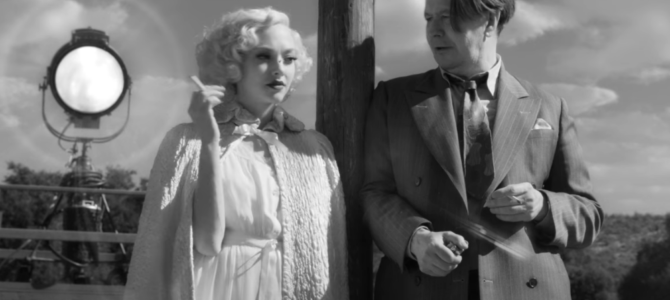
With Old Hollywood sensibilities and contemporary writing, “Mank” is truly the best of both worlds. David Fincher’s new Netflix film, following Herman “Mank” Mankiewicz (Gary Oldman) as he writes the screenplay of “Citizen Kane” is a stunning piece of cinema and a must-watch for anyone who loves old movies.
Along with the sequences of Mank struggling to write the script while combatting his alcoholism, the film contains many flashbacks to his time as a successful writer, his friendships with William Randolph Hearst (the ultimate inspiration for Kane) and Hearst’s mistress Marion Davies, and their subsequent fallout surrounding Upton Sinclair’s bid for governor of California.
If you’re searching for a wholly factual depiction of Mankiewicz’s life or the making of “Citizen Kane,” then you should look elsewhere, and stop believing that biopics will ever be historically accurate. However, what it lacks in accuracy is more than made up for by the film’s capturing of the feel of classic movies.
Fincher is one of the most talented and engaging directors working today. His meticulous shots and enthralling storytelling draw you in, making what could have been an isolating tale of 1930s political power brokers and their Hollywood connections into a character study of fascinating and relatable individuals.
Every technical aspect of the film is exemplary, with the cinematography, lighting, costume, hair, editing, and score all contributing to the potent atmosphere. I regret not having been able to see the film in a theater, to fully enjoy the visuals. They were gorgeously detailed without becoming overly busy or distracting.
An especially exciting Easter egg was the presence of cue marks, the black dots that briefly appear twice in the top right corner of the screen, to indicate a film reel would soon require switching (now unnecessary due to the switch to digital).
Those who grew up when digital had already replaced film — myself included — were first introduced to the existence of these “cigarette burns” in the cult classic that launched a thousand dorm room posters, “Fight Club,” also directed by Fincher, adding to the meta excitement as well as the period accuracy.
To clarify the timelines, due to the nonlinear narrative structure employing many flashbacks, the year is given at each era transition, in the form of a screenplay. While announcements such as time and location can be frustrating and lazy, the framing as part of the script allows the narrative cheat to add to the film.
Yet none of this style is empty spectacle. It serves to augment a compelling story led by interesting characters. The cast is exceptional, with nearly no weak links. They play off each other exceptionally, with the lived-in chemistry of longtime associates. One scene midway through the film sees most of the main characters at a dinner party, laughing, drinking too much, and talking politics, all scored live by a pianist using his instrument to punctuate the conversation.
Watching the scene transported audiences directly into the party, watching jokes, subtextual tensions, and complications in relationships ebb and flow through fabulously witty dialogue and well-realized characters. I could have watched an entire film set just at that party.
The only misstep in the cast was Bill Nye as Upton Sinclair, an uninspired bit of stunt casting gone awry. The children’s entertainer and scientist does not have the acting chops to make anything of the mercifully small role. Sinclair’s failed gubernatorial race is a notable subplot, due to Hearst and Louis B. Mayer’s fears of his socialist past contrasted with Mank’s sympathies.
Gary Oldman is predictably brilliant as the eponymous writer. He is fun and charming, but the cruelty of his alcoholism always lurks beneath the surface (except when it explodes in a powerful and climactic scene). Charles Dance is likewise charismatic yet dangerous as communications magnate Hearst, upon whom Charles Foster Kane is based.
However, by far the high point in a cast filled with highs was Amanda Seyfried as Hearst’s lover, actress Marion Davies, giving the performance of both the film and her career. Seyfried brings depth to the seemingly vapid woman, subtly indicating a complicated woman underneath the flighty, fun surface. When award season eventually arrives, Seyfried ought to be a major contender for the supporting actress statue.
She likewise effortlessly handles the period slang naturally strewn throughout the dialogue, earnestly exclaiming words like “Jeepers” as if they were staples of her vocabulary. Often in period pieces, actors stumble over an antiquated lexicon, calling undue attention to the outdated words. The entire cast, but Seyfried in particular, breezes through the dialogue with grace.
Far too many movies about making movies become either self-indulgent odes to the importance of Hollywood, such as “La La Land” and Netflix’s miniseries “Hollywood.” “Mank,” in contrast, is clearly a love letter to the films, not the industry. Every frame is imbued with a passion for cinema, which is infectious to the audience. In exploring the creation of an exceptional film, Fincher has created one himself.









